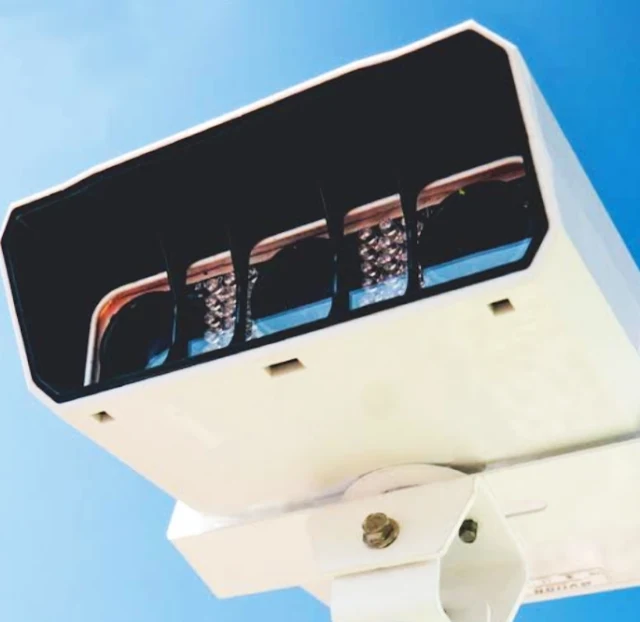LiDAR: Seeing the World in 3D with Light
LiDAR, an acronym for Light Detection and Ranging, is a powerful technology that uses light pulses to measure distance and create high-resolution, 3D models of the world around us. Imagine a camera that not only captures a flat image but also records the precise distance to every object in the frame. That's essentially what LiDAR does, and it has a wide range of applications in various fields.
Here's how LiDAR works:
- Laser Pulse: A pulsed laser beam fires from the LiDAR unit.
- Reflection: The laser pulse strikes an object (building, tree, car, etc.) and bounces back.
- Time Measurement: The LiDAR system precisely measures the time it takes for the light pulse to travel to the object and return.
- Distance Calculation: By knowing the speed of light, the system can calculate the distance to the object based on the travel time of the pulse.
- 3D Mapping: By repeating this process millions of times per second, LiDAR builds a detailed 3D point cloud of the surroundings.
LiDAR Applications by Industry
Here's a table outlining some of the key applications of LiDAR technology across various industries:
| Industry | Application | Benefits |
|---|---|---|
| Autonomous Vehicles | Self-driving car navigation, obstacle detection, environment perception | Enables safe and accurate navigation for autonomous vehicles. |
| Surveying & Mapping | Creating 3D maps of landscapes, buildings, and infrastructure | Provides highly detailed and precise data for construction, urban planning, and environmental monitoring. |
| Archaeology | Uncovering hidden features beneath the ground, creating 3D models of historical sites | Enables non-intrusive exploration and detailed documentation of archaeological sites. |
| Robotics | Mapping environments, object recognition, precise robot manipulation | Equips robots with the ability to navigate their surroundings, interact with objects, and perform tasks more effectively. |
| Agriculture | Crop health monitoring, terrain analysis, precision agriculture practices | Provides data for optimizing crop yields, managing resources, and improving agricultural efficiency. |
| Forestry | Forest canopy mapping, tree volume estimation, deforestation monitoring | Enables sustainable forest management practices by providing detailed data on forest health and resources. |
| Disaster Management | Flood inundation mapping, landslide detection, post-disaster damage assessment | Provides crucial information for emergency response, risk mitigation, and disaster recovery efforts. |
LiDAR offers several advantages over traditional imaging methods:
- Accurate Distance Measurement: LiDAR excels at measuring distances, creating highly precise 3D models.
- All-Weather Performance: Unlike cameras that struggle in low light or bad weather, LiDAR can function effectively under various conditions.
- Detailed 3D Data: LiDAR provides rich information about an object's shape and size, crucial for many applications.
LiDAR technology is finding its way into various industries:
- Autonomous Vehicles: Self-driving cars rely on LiDAR to perceive their surroundings, detect obstacles, and navigate safely.
- Surveying and Mapping: LiDAR creates accurate 3D maps of landscapes, buildings, and infrastructure, useful for construction, urban planning, and environmental monitoring.
- Archaeology and Archaeology: LiDAR helps archaeologists uncover hidden features beneath the ground and create detailed 3D models of historical sites.
- Robotics: LiDAR equips robots with the ability to map their environment, localize themselves, and interact with objects more precisely.
As LiDAR technology continues to develop, we can expect even more innovative applications in the future. It's a powerful tool that is shaping the way we see and interact with the world around us.
The Global Race for LiDAR Supremacy: A Multi-Nation Spotlight
LiDAR (Light Detection and Ranging) technology is rapidly evolving, and the race for leadership is on. While there's no single frontrunner, several countries are making substantial contributions, shaping the future of this transformative technology.
Global Leaders in LiDAR Technology
| Country | Focus Area | Leading Companies | Impact |
|---|---|---|---|
| United States | Autonomous Vehicles & General LiDAR | Velodyne LiDAR, Innoviz Technologies | Established players & innovation in LiDAR design |
| Germany | Automotive LiDAR | Bosch, Infineon Technologies | Crucial LiDAR systems for self-driving car navigation |
| Japan | Industrial LiDAR | Yaskawa Electric, Denso | Advanced LiDAR systems for robotics & automation |
| China | LiDAR Development & Market Growth | Huawei, Xiaomi | Significant investment & ambition for domestic LiDAR capabilities |
| France | Affordable & Scalable LiDAR | Valeo | Making LiDAR technology more accessible |
| South Korea | Integration with Existing Products | Samsung, LG Electronics | LiDAR for autonomous vehicles & advanced smartphones |
| Canada | Solid-State LiDAR Technology | LeddarTech | Offering a potentially more reliable & cost-effective LiDAR solution |
Here's a glimpse into the global landscape of LiDAR innovation:
-
United States: Home to established giants like Velodyne LiDAR and emerging players like Innoviz Technologies, the US boasts a robust LiDAR ecosystem. These companies are pushing the boundaries in LiDAR design for autonomous vehicles and beyond.
-
Germany: German engineering prowess shines in the automotive LiDAR domain. Companies like Bosch and Infineon Technologies are at the forefront, developing crucial LiDAR systems for self-driving cars. Their expertise is vital for the safe navigation of autonomous vehicles.
-
Japan: Robotics and automation are a cornerstone of Japanese industry, and LiDAR plays a key role. Yaskawa Electric and Denso are just a few examples of Japanese companies leading the charge in industrial LiDAR. Their focus is on creating advanced systems for robotic arms, automated guided vehicles, and other industrial applications.
-
China: China's rise in technological innovation extends to LiDAR. Tech giants like Huawei and Xiaomi are actively entering the market, demonstrating the country's commitment to developing its own LiDAR capabilities. This significant investment fuels China's ambitions to become a major player in the global LiDAR market.
-
France: French companies like Valeo are making significant contributions. Valeo's LiDAR systems are designed with a focus on affordability and scalability, aiming to make this technology more accessible across industries.
-
South Korea: South Korea, a leader in the global tech sector, is also entering the LiDAR race. Companies like Samsung and LG Electronics are actively researching and developing LiDAR solutions, aiming to integrate them into their existing product lines, such as autonomous vehicles and smartphones with advanced depth-sensing capabilities.
-
Canada: Canada's contributions to LiDAR development shouldn't be overlooked. Companies like LeddarTech are at the forefront of solid-state LiDAR technology, offering a potentially more reliable and cost-effective alternative to traditional mechanical LiDAR systems.
This is just a snapshot of the global LiDAR landscape. With ongoing research and development, we can expect even more countries to emerge as significant players in this dynamic field. Collaboration between nations is also likely to play a crucial role in accelerating LiDAR advancements and its widespread adoption across various industries.
Frequently Asked Questions About LiDAR (Light Detection and Ranging)
LiDAR (Light Detection and Ranging) is a remote sensing technology that uses laser light to measure distance to a target. It's widely used in various fields, including surveying, mapping, and environmental monitoring. Here are some common questions and answers about LiDAR:
Basic Concepts
- What is LiDAR?
- LiDAR is a remote sensing technology that uses laser light to measure distance to a target.
- How does LiDAR work?
- LiDAR emits a laser pulse and measures the time it takes for the pulse to return after reflecting off a target. The distance to the target is calculated based on the time of flight.
Applications of LiDAR
- What are the main applications of LiDAR?
- LiDAR has a wide range of applications, including:
- Topographic mapping: Creating detailed maps of the Earth's surface, including elevation and vegetation.
- Forestry: Measuring tree height, density, and biomass.
- Archaeology: Detecting ancient structures and artifacts.
- Urban planning: Assessing urban development and infrastructure.
- Environmental monitoring: Studying changes in land cover, coastal erosion, and natural disasters.
- LiDAR has a wide range of applications, including:
- How is LiDAR used in forestry?
- LiDAR can be used to measure the height and diameter of trees, estimate forest biomass, and monitor forest health.
Types of LiDAR
- What are the different types of LiDAR?
- There are two main types of LiDAR:
- Airborne LiDAR: Mounted on aircraft or drones, it provides large-scale coverage.
- Terrestrial LiDAR: Ground-based LiDAR, used for smaller areas and detailed measurements.
- There are two main types of LiDAR:
- What are the advantages and disadvantages of airborne and terrestrial LiDAR?
- Airborne LiDAR offers large-scale coverage but may have lower resolution. Terrestrial LiDAR provides higher resolution but is limited to smaller areas.
Challenges and Limitations
- What are the challenges of using LiDAR?
- Challenges include:
- Data processing: Processing LiDAR data can be complex and time-consuming.
- Cost: LiDAR equipment and data processing can be expensive.
- Environmental factors: Factors like weather and vegetation can affect LiDAR data quality.
- Challenges include:
- What are the limitations of LiDAR?
- LiDAR may not be suitable for certain environments, such as dense forests or urban areas with many obstructions.
Future Directions
- What are the future directions of LiDAR technology?
- Future directions include:
- Higher resolution: Developing LiDAR systems with higher spatial and temporal resolution.
- Integration with other technologies: Combining LiDAR with other remote sensing technologies, such as hyperspectral imaging.
- Autonomous LiDAR: Developing autonomous LiDAR systems for various applications.
- Future directions include:


